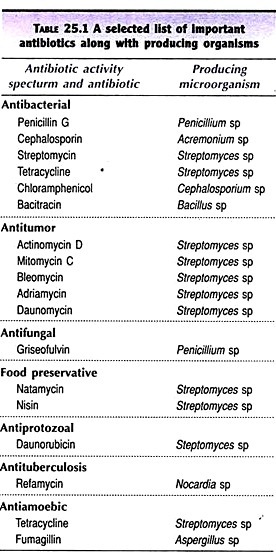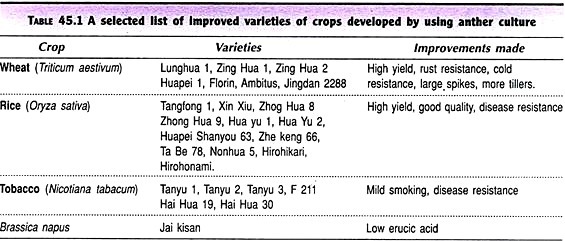The stem is the ascending part of the plant formed by the elongation of the plumule of the embryo. It bears leaves, branches and flowers.
It is generally erect, strong and usually grows away from the soil (negatively geotropic). There are several plants in which the stem is weak and it either trails on the ground or twines around a support.
Stems are differentiated into regions called nodes. Leaves and branches arise from nodes. The portion between the nodes is called the Internode.
The growing apex of the stem is covered by numerous, tiny, developing leaves and is called the apical bud. Buds also arise in the axils of leaves; they are termed axillary or Lateral buds. These buds give rise to branches or flowers.
Plants have been classified on the basis of the height and strength of stem and their life- span. Herbs are small plants with a soft stem. Medium-sized plants with woody stems that branches profusely from the base and attain a bushy appearance are called Shrubs.
Trees have a stout and tall trunk with profuse branching. Plants which complete their life cycle within one season are termed annuals such as agricultural crops (rice, groundnut etc.). Biennials complete their life cycle in two seasons (radish, cabbage).
Plants that usually survive for a number of years and produce flowers and fruits during specific seasons are termed perennials (mango, apple etc.).Besides bearing branches, leaves and flowers, stems perform other functions such as presentation, vegetative propagation and storage of reserve food.
Functions of stem:
Primary or main functions:
1. It supports and holds leaves, flowers and fruits.
2. Leaves are borne on stem in such a fashion that they are able to carry on the important function efficiently just like to receive the light and to carry on the gaseous exchange.
3. The stem conducts the water and minerals from roots to leaves and fruits.
4. Stem bears flowers and fruits in position to facilitate the processes of pollination and fertilization.
Secondary or Accessory functions:
1. Perennation
2. Storage of food
3. Photosynthesis
4. Vegetative propagation
5. As climbers
There are three types of stem: Underground stem, Aerial stem and Sub- aerial stem.
1. Underground stem:
Stems of some plants remain in the ground and serve the function of perennation and storage of food. They produce aerial shoots annually. They resemble roots superficially but are distinguishable by the presence of scale leaves and buds at nodes. Such stem also act as a means of vegetative propagation. The modified underground stems are the following: (Fig. 4.6 i – iv)
(i) Rhizome:
It is a thickened, prostrate, underground stem having distinct nodes and internodes, scaly leaves at the nodes, axillary and terminal buds present; may be branched or un-branched; sometimes adventitious roots also arise, e.g. Ginger.
(ii) Tuber:
The underground stem becomes enlarged at the growing tips by the accumulation of stored food, commonly starch, tubers are produced e.g. Potato. The eyes of potato are nodes at each of which 1-3 buds are produced in the axils of small scaly like leaves.
(iii) Bulb:
Bulb is a short underground stem with fleshy leaf base called scales. Stem is very much reduced and becomes disc like. The discoid stem in convex or conical in shape and bears highly compressed internodes. These node bear fleshy scales. On the upper side, disc bears terminal bud surrounded by number of leaves. The axillary buds are present between the axis of leaves. The adventitious roots are borne on the lower side of the disc. E .g. Onion.
(iv) Corm:
Corm is short, thick and un-branched underground stem with stored food material. It grows vertically and covered by thin sheathing leaf bases of dead leaves called scales. The corm bears buds at their nodes. These buds are responsible for giving off adventitious roots. Corm serves the functions of food storage, vegetative propagation and perennation. Corm is more or less rounded in shape or often somewhat flattened from top to bottom, e.g. Colocasia.
2. Sub – aerial stems:
Lower buds of the stem in some plants grow out into short, lateral branches. These are named according to their origin, nature and mode of reproduction (Fig. 4.7 i- iv):
(i) Runner:
It grows prostrate in all directions above the soil level. Nodes bear scale leaves. It has a creeping stem with long internodes. On the lower sides, nodes bear adventitious roots. Runner develops from the axils of lower leaves of aerial stem which sends slender horizontal branches in the form of runners. When older parts of plant die, the branches separate from parent plant and form independent plants e.g. Doob grass.
(ii) Stolon:
It is a slender lateral branch which appears from the lower part of main axis. This lateral branch grows aerially for some distance and becomes arched and finally touches the ground to give rise to new shoot with the help of its terminal bud. It also bears roots to get fixed with the soil e.g. Jasmine.
(iii) Offset:
Offset is more shorter and thicker. It is usually found in aquatic plants like water hyacinth and Pistia. It bears a cluster of leaves near the water or ground level and gives adventitious roots inside water or ground from all nodes, e.g. Pistia.
(iv) Sucker:
Like the stolon the sucker is also a lateral branch but it grows obliquely upwards and gives rise to a new plants e.g. Mentha.
3. Aerial stems:
These modified aerial stems perform unusual functions. Different forms of these stems are the following (Fig. 4.8 i -v):
(i) Stem tendril:
It is a leafless, spirally coiled branch formed in some climbers and helps them in climbing neighbouring objects; they may be modification of axillary bud, e.g. Passiflora.
(ii) Stem thorn:
Stem thorn is a hard, straight and pointed structure; it is a defensive organ; also helps in climbing; originates from axillary or terminal bud, e.g. Duranta.
(iii) Pylloclade:
It is a green, flattended or cylindrical stem which takes the form and function of leaf. It contains chlorophyll and is responsible for carrying on photosynthesis. It bears succession of nodes and intemodes at long or short intervals. Phylloclades are found in xerophytic plants where the leaves either grow feebly or fall off early or modified into spines e.g. Opuntia,
(iv) Cladode:
Phylloclade with one or two internodes is called cladode e.g. Asparagus. In Asparagus cladodes are needle-like, slightly flattened green structures which appear in cluster in the axil of a scaly leaf. Main stem bears leaf spines at its nodes. A scale leaf is found just above the spine. Every branch on main stem bears only scale leaves. In the axil of scale leaves cluster of cladodes appear
(v) Bulbil:
Bulbil is the modification of vegetative or floral bud. It is swollen due to storage of food. It can function as an organ of vegetative propagation e.g. Dioscorea.
Anatomy of Stem:
A thin transverse section of a young stem reveals the internal structure when observed under me microscope:
Internal structure of Dicot Stem (Fig. 4.9):
1. Epidermis:
It forms the single-celled outermost layer of the stem. The outer wall of epidermal cells is cutinized. It bears multi-cellular hairs and a few stomata. It is protective in nature.
2. Cortex:
Cortex lies below the epidermis. It is differentiated into three zones-
(a) Hypodermis:
It is formed of 4 to 5 cell thick layer of collenchymatous cells. These cells are living and contain chloroplasts.
(b) General cortex:
It lies below the hypodermis. It consists of a few layers of thin- walled parenchymatous cells with intercellular spaces. Some of the cells have chloroplasts and they are known as chlorenchyma.
(c) Endodermis:
It is the innermost layer of cortex. It is made up of single row of compact barrel-shaped cells without intercellular spaces. Since the cells of endodermis contain starch grains, it is also known as starch-sheath. Casparian strips are distinctly visible in endodermal cells.
3. Pericycle:
It lies below the endodermis. It is formed of semilunar patches of sclerenchyma. The sclerenchyma cells are dead and rigid with their walls. Pericycie provides mechanical support to the plant and protects the vascular bundles.
4. Vascular bundles:
They are many in number and arranged in a ring enclosed by the pericycle. The vascular bundles are conjoint, collateral, open and endarch. Each vascular bundle is composed of Xylem, Phloem and Cambium.
(i) Xylem:
It is the innermost layer of vascular bundles and lies towards the centre of the stem. Xylem consists of vessels, tracheids, wood fibres and wood -parenchyma. The smaller vessels which He towards the centre comprise the protoxylem and the bigger ones which lie away from the centre are known as metaxylem.
(ii) Phloem:
It lies below the pericycle and is composed of sieve tubes, companion cells and phloem parenchyma. The phloem cells store starch, protein and fats.
(iii) Cambium:
It is a strip of thin-walled cells lying in between the phloem and xylem. The cambial cells consist of a single layer of meristematic cells.
5. Pith or medulla:
It is the central part of the stem, composed of parenchymatous cells with conspicuous intercellular spaces. Its main function is storage of food and transverse conduction of food materials.
Internal Structure of Monocot Stem (Fig. 4.10):
1. Epidermis:
It is the outermost layer stem composed of square-shaped cells and it is interrupted by stomata. It is covered with cuticle and epidermal hairs are absent. It is protective in nature.
It lies below the epidermis. It consists of two or three layers of sclerenchymatous cells. It is mechanical in functions, and provides support and strength to the stem.
3. Ground tissue:
It consists of a mass of thin-walled parenchyma cells extending from below the hypodermis to the centre of the stem. It is not differentiated into definite tissues like cortex, endodermis, pericycle, etc., as in dicot stems. The cells of the ground tissue have intercellular spaces. The cells contain reserve food materials, vascular bundles are scattered in the ground tissue.
4. Vascular bundles:
Many vascular bundles remain scattered in the ground tissue. They lie closer to periphery. The peripheral vascular bundles are smaller than the central ones. Each vascular bundle is surrounded by a sheath of thick-walled sclerenchyma cells called the bundle-sheath. It provides protection and strength to the vascular bundles. Vascular bundles are conjoint, collateral, endarch and closed. Each vascular bundle is composed of xylem and phloem.




